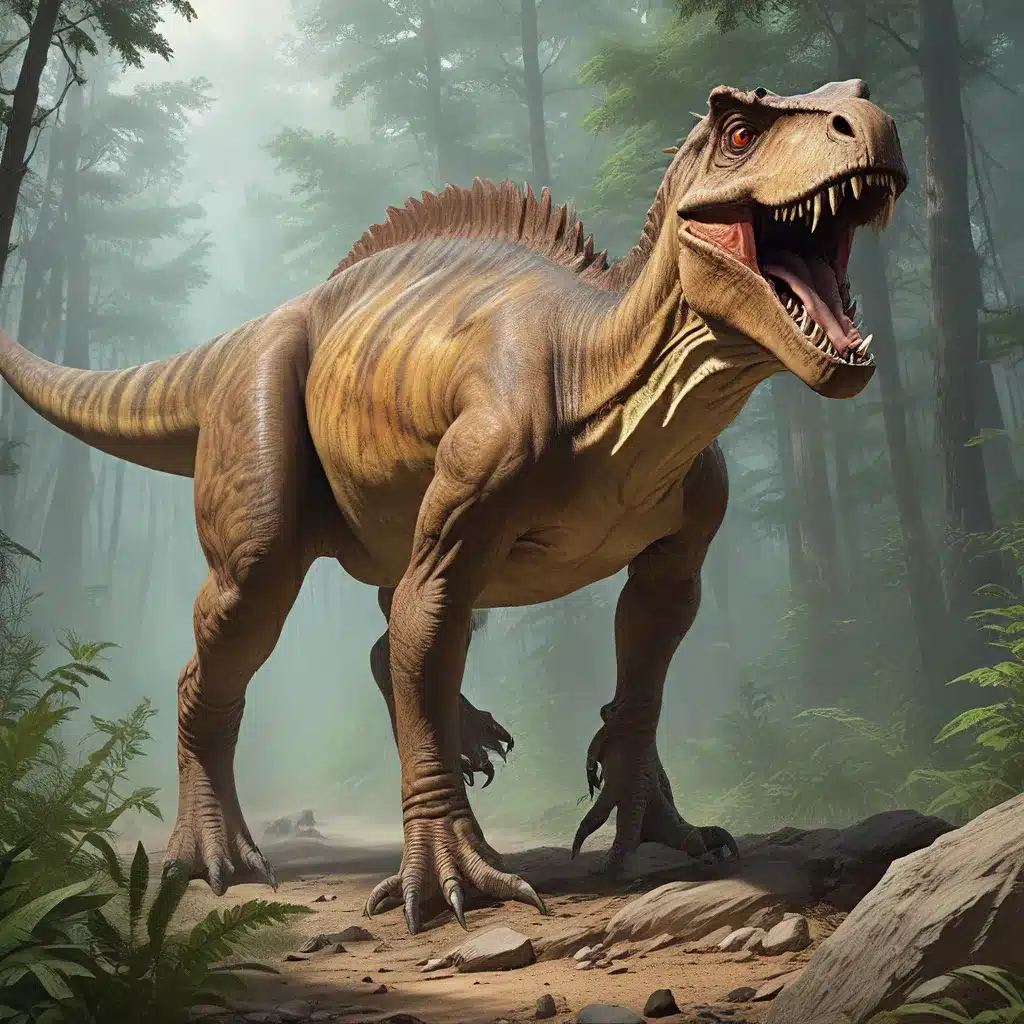
In the vast expanse of our planet, the mysteries of the natural world continue to captivate our curiosity. Among the most intriguing realms of exploration is the realm of cryptozoology – the study of animals that are not yet recognized by mainstream science. One region that has particularly piqued the interest of cryptozoologists is the Congo Basin in central Africa, a veritable hotspot for tales of prehistoric-looking creatures.
Whispers from the Jungle: Cryptids of the Congo
The Congo Basin, stretching across countries like the Democratic Republic of the Congo, Cameroon, and Angola, is a dense and largely unexplored jungle that has long been the subject of fascinating cryptid reports. These reports, collected from various sources, including tribal legends, explorer accounts, and occasional sightings, describe a menagerie of creatures that seem to defy the conventional boundaries of modern zoology.
One of the most well-known of these cryptids is the Mokele-Mbembe, a creature said to resemble a small sauropod dinosaur, complete with a long neck and a herbivorous diet. Accounts describe this enigmatic beast as inhabiting the remote waterways and swamps of the Congo, occasionally emerging to feed on the vegetation that thrives in these lush environments.
Another intriguing cryptid is the Kasai Rex, a large, bipedal theropod-like creature that is reported to prey on larger animals, such as elephants and rhinoceroses. This fearsome predator is said to possess a carcharodontosaurid-like appearance, harkening back to the Cretaceous Period when such formidable dinosaurs roamed the Earth.
The Reddit post also mentions other remarkable cryptids from the region, including a 50-foot-long snake akin to the extinct Titanoboa, a giant ground-dwelling spider called the Jba Fofi, and a massive crocodilian reminiscent of the prehistoric Sarcosuchus or Deinosuchus.
Persisting Prehistoric Creatures: A Cryptozoological Conundrum
The abundance of cryptid reports from the Congo Basin raises intriguing questions: Could it be possible that some dinosaur species have managed to evade extinction and continue to thrive in the remote and largely unexplored jungles of central Africa?
According to the insights provided in the HowStuffWorks article, the answer may not be as far-fetched as one might assume. The article explores the idea that large, undiscovered animals could still exist in the world, particularly in challenging and remote habitats that are difficult for humans to access and study.
The Congo Basin, with its dense vegetation, sprawling rivers, and rugged terrain, fits the profile of an environment that could potentially harbor undiscovered species, including those that may resemble prehistoric creatures. As the article notes, “Almost everyone agrees that if there is a large animal out there we’ve never seen before, it’s bound to be in that most mysterious biome of all: the ocean.” However, the vast and largely unexplored jungle regions of the world, such as the Congo, cannot be discounted as potential hiding places for these elusive creatures.
A Legacy of Exploration and Discovery
The search for undiscovered species, often referred to as cryptozoology, has a long and storied history. While some aspects of cryptozoology may be viewed with skepticism by mainstream science, the field has nonetheless produced some remarkable discoveries that have expanded our understanding of the natural world.
The Reddit post on paleontology highlights the importance of this field, noting that paleontology is the science that “unravels the æons-long story of life on the planet Earth from the earliest monera to the endless forms we have now.”
Throughout history, intrepid explorers, indigenous tribes, and dedicated researchers have ventured into the unknown, uncovering new species and challenging the boundaries of our scientific understanding. The Congo Basin has long been a focal point of this exploration, with countless stories of mysterious creatures and ancient wonders waiting to be unveiled.
Bridging the Gap: Reconciling Cryptozoology and Paleontology
As the search for undiscovered species continues, the fields of cryptozoology and paleontology have the potential to intersect in fascinating ways. The cryptid reports from the Congo Basin, with their descriptions of prehistoric-looking creatures, could hold the key to unlocking new insights into the ancient past.
Paleontologists, armed with their expertise in fossil analysis and evolutionary biology, may be able to shed light on the plausibility of these cryptid sightings. By examining the physical characteristics and behavioral patterns described in the accounts, researchers could potentially identify similarities with known prehistoric species or uncover clues about previously undiscovered lineages that managed to survive the mass extinctions of the past.
Conversely, cryptozoologists, with their willingness to explore the unexplained and push the boundaries of mainstream science, could contribute valuable insights to the field of paleontology. Their investigations into the remote and undiscovered regions of the world, such as the Congo Basin, could lead to the unearthing of new fossil evidence or the identification of living relics from the distant past.
Embracing the Unknown: The Future of Cretaceous Cryptozoology
As we delve deeper into the mysteries of the natural world, the intersection of cryptozoology and paleontology holds immense potential. The Congo Basin, with its rich tapestry of cryptid reports and unexplored habitats, remains a tantalizing frontier for those who seek to uncover the secrets of the past and the present.
By combining the rigorous scientific methods of paleontology with the open-minded exploration of cryptozoology, researchers may be able to bridge the gap between the known and the unknown, shedding light on the persistence of prehistoric creatures and the hidden wonders that still await discovery.
The Lost Kingdoms blog invites you to join us on this captivating journey, as we delve into the mysteries of ancient life, uncover archaeological marvels, and explore the intriguing realms of cryptozoology. Together, we can push the boundaries of our understanding and unravel the enduring enigmas that have captured the imagination of explorers, scientists, and enthusiasts alike.


